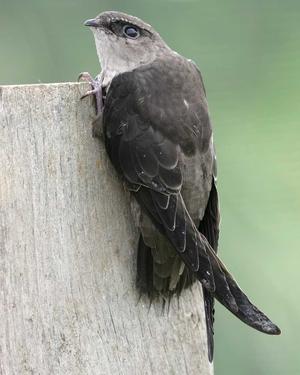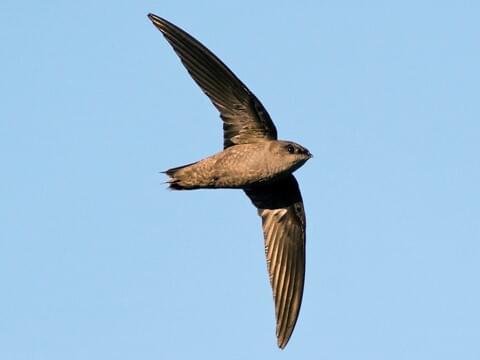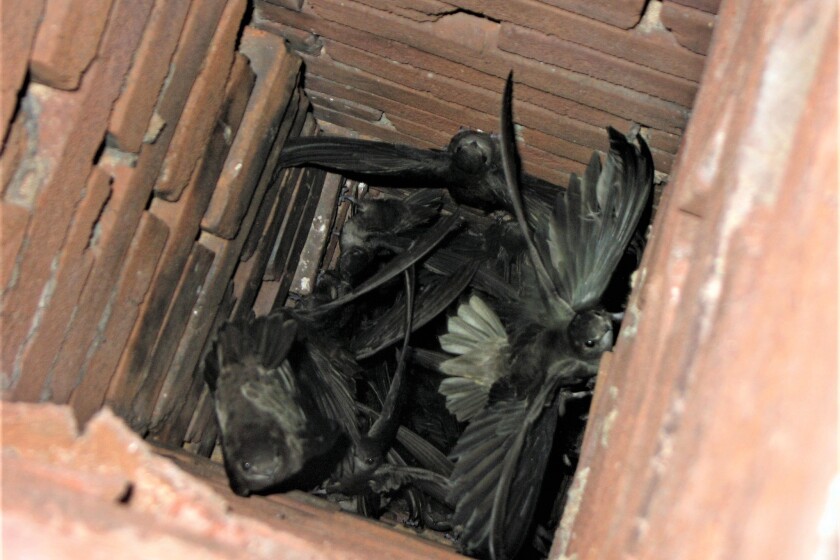Swifts are a pretty interesting type of bird because they are super efficient except for one thing – they can’t really land. That does sound like a major design flaw, but they have survived natural selection for years so it can’t be that detrimental. Because of their inability to land on flat ground, they are forced to land on vertical structures to roost. The most common swift in our area, the chimney swift, gets its name from the fact they are often found in chimneys (great spot for them because it is a long vertical structure).

Chimney swifts are almost always flying (unless they are roosting), which makes them REALLY good flyers. They can fly up to 500 miles per day! Pretty impressive for a bird that weighs around 21 grams, around the weight of 4 grapes. Because of their very active lifestyle, they also eat a lot. They are able to eat up to 12,000 insects a day. Chimney swifts are essential to keep ecosystems in check by managing insect populations.
Chimney swifts also have a long migration, and they spend their winters in the upper Amazon basin in countries like Brazil and Ecuador and their summers as far north as parts of Canada. They migrate in flocks, and when they are flying over, they are easily identifiable by their fast-paced, overlapping chipping notes.

Prior to the industrialization of America, chimney swifts used to live in hollowed out trees in old growth forests. But, as old forests have been cut down for logging and less natural area is being preserved, they are forced to nest and roost in chimneys. Even in natural areas like parks, hollow trees are often removed because they can pose a safety hazard if they fall. So, they often live in urban and suburban areas where they are able to find chimneys and other dark, vertical structures to live in.

In another sad twist of fate, after people cut down all of the swifts habitat and the swifts were forced to live in chimneys, now people are blocking off all the chimneys. This has inevitably caused the chimney swift population to decline as they have been kicked out of their home for a second time in only a few hundreds years. All sorts of guards and cages have been invented for the primary purpose of keeping chimney swifts out. Also, many newer chimneys are made of metal which can trap the swifts and be death traps for them.
One of the best solutions for this problem is to uncap your chimney and invite the swifts to live there! Some people may be opposed to having birds live in their house, but they are native and not harmful. Plus, when you think about it, your house took away their house. Sure, you would need your chimney cleaned more often, but it is a great way to help these birds that are seeing massive population declines. Also, having some chimney swifts live in your yard is a great way to keep the local insect population in check. Another way is to build artificial chimney structures. Most people are unaware how capping their chimney is harmful, so spreading information about chimney swifts is also a great way to advocate for them!
